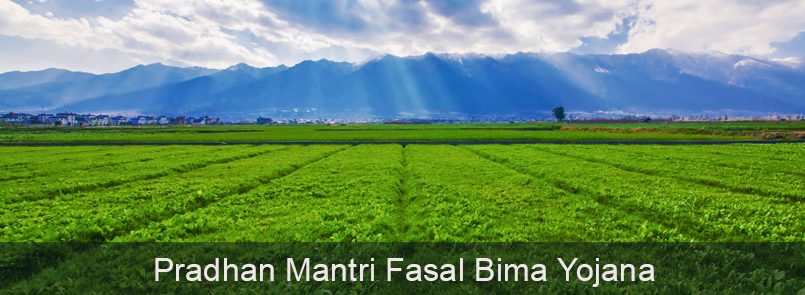This scheme has been launched by the Government of India in order to promote sustainable agricultural practices among the farmers. The major objectives of this scheme are:
- Providing support to the farmers in case they suffer any financial setback due to loss/damage done to their crops because of unfortunate events like widespread calamities, mid-season calamities, post-harvest loss etc.
- This scheme gives benefits to the farmers at all the stages of farming i.e. from sowing to post-harvest procedures.
- The financial support provided by this scheme ensures that farmers do not give up on farming and that they are motivated to carry on with farming as their investment is now insured.
- One of the major motives of launching this scheme is that it encourages farmers to explore and implement the latest agricultural practices.
It also promotes a healthy competition among the farmers to enhance the growth of diversified crops.
2. Which farmers are eligible for this scheme?Under the PMFBY and RWBCIS scheme, both Loanee and Non-Loanee farmers can be insured.
3. Who are loanee and non-loanee farmers?All the farmers who have availed loans from one or more financial institutions for Seasonal Agricultural Operations (SAO) of the notified crops are referred to as loanee farmers. Whereas, the farmers who have not availed any loan from any recognized financial institution are referred to as non-loanee farmers.
4. Which crops are insured under these schemes?Following crops are insured under this scheme:
- Food crops (Cereals, Millets, Pulses)
- Oilseeds
- Annual Commercial/ Annual Horticultural crops
The PMFBY scheme has two components, which provides coverage to the farmers (loanee & non-loanee):
- Compulsory component: All the loanee farmers are compulsorily covered and provided insurance as per the provisions mentioned in the scheme.
- Voluntary component: This component is optional for non-loanee farmers. The procedure to opt for this component is:
- The farmers willing to avail this benefit should approach the nearest bank / authorized channel partner of the insurance company before the mentioned cutoff date.
- They should fill-up the proposal form and provide the details of their saving bank account & land identification number with all the necessary documents.
- The farmers will need to submit this form along with the premium amount to the bank/ authorized channel partner of the insurance company.
Loanee farmers are compulsorily insured through the banks from where they avail their crop loan. Non-Loanee farmers can insure their crop either by visiting CSC centers or offices of insurance companies. Farmers can also approach banks or agents & brokers of insurance companies, or online on the farmer portal as well.
7. How is the premium calculated under this scheme?The Actuarial Premium Rate (APR) is calculated on the Sum Insured (SI). The maximum premium rate payable by farmers under this scheme is determined using the following table:
| Season | Crops | Maximum insurance charges payable by the farmer |
| Kharif | All food grains and oilseed crops | 2% of SI |
| Rabi | All food grains and oilseed crops | 1.5% of SI |
| Kharif and Rabi | Annual Commercial / Annual Horticultural crops Perennial Horticultural Crops (Pilot Basis) | 5% of SI |
The formula for calculating the sum insured for an individual farmer under this scheme is:
Sum Insured = scale of finance per hectare * area of the notified crop by the farmers
9. What are the risks covered under PMFBY scheme?The Pradhan Mantri Fasal Bima Yojna scheme covers the following risks:
- Prevented Sowing/Planting Risk
- Standing Crop (Sowing to Harvesting)
- Post-Harvest Losses
- Localized Risk
In case of a widespread calamity, the farmer gets paid for the shortage in yield of the insured crop compared to Threshold Yield (TY) on area approach. The claim is calculated as:
(Threshold Yield - Actual Yield) ------------------------------------------ * Sum Insured Threshold Yield
11. How can farmers intimate about the localized losses to the insurance company?Farmers may intimate the details of the loss within 72 hours of the calamity either to us or the concerned bank or local agriculture department/district officials. They can also reach us using the toll-free number 1800-209-5959.
12. What should be done in case of losses incurred due to prevented sowing?In case of loss due to prevented sowing, there is no need for the insured farmer to intimate the insurance company. This will be a widespread calamity and the assessment is based on area approach. This benefit is triggered when a majority of farmers are unable to sow their crop because of weather conditions.
13. When is the right time to enroll in the Pradhan Mantri Bima Fasal Yojna?All the enrolments under this scheme should be done before the cutoff date as mentioned in the State Government notification of every state. Also, the farmer should pay the share of his premium duly remitted by the Bank or Intermediary within the cutoff date to the Insurance Company. If there is a delay in enrolling and submitting the premium beyond the cutoff date, then the Insurance Company has the right to reject coverage.
14. What are the perils covered for the post-harvest loss under PMFBY scheme?Post-harvest yield loss is assessed on individual plot/farm occurring due to hailstorm, cyclone, cyclonic rains and unseasonal rainfall when the harvested crop is kept lying on the fields "in cut and spread" condition for drying of the crop up to 14 days from harvesting of the crop.
15. What are the tax benefits for farmers under this scheme?This scheme has been exempted from the service tax.
*Standard T&C apply. Insurance is the subject matter of solicitation. For more details on benefits, exclusions, limitations, terms, and conditions, please read the sales brochure/policy wording carefully before concluding a sale. Service Chat:
Service Chat: 

